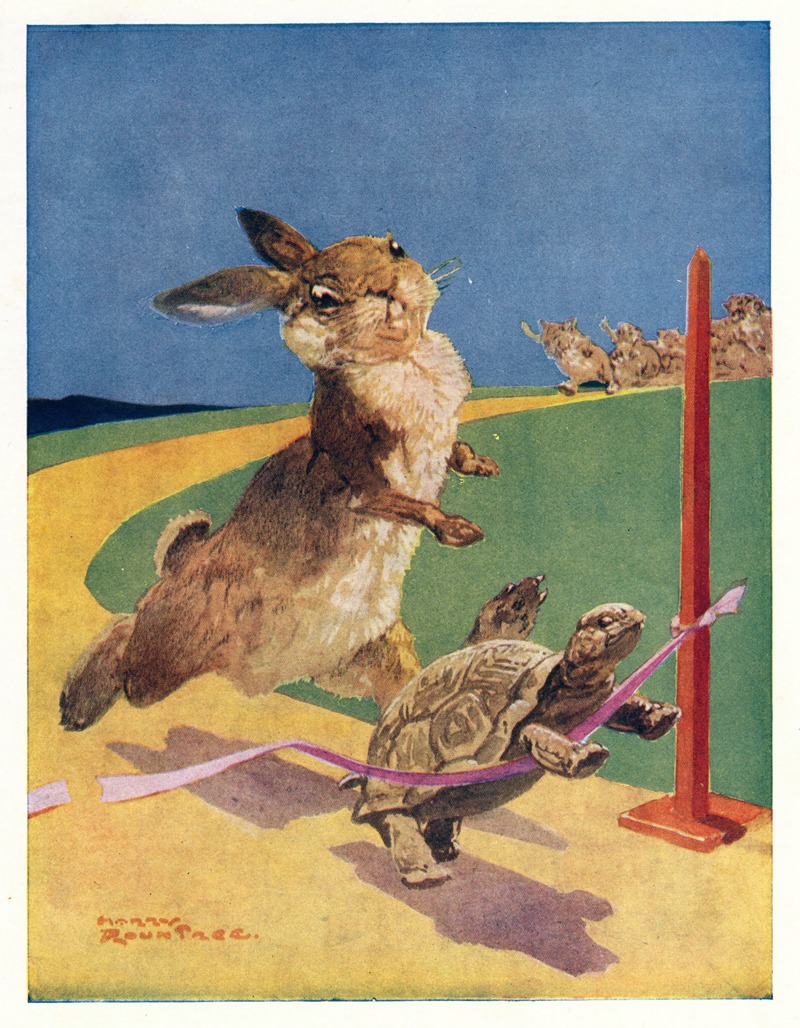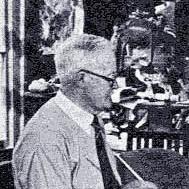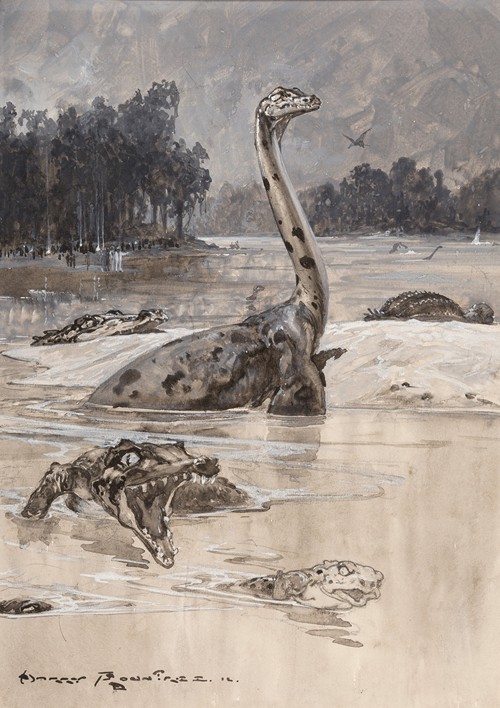

Harry Rountree was a prolific illustrator working in England around the turn of the 20th century. Born in Auckland, New Zealand, he moved to London in 1901, when he was 23 years old.
Harry Rountree was born in 1878 to Irish banker, Stephen Gilbert Rountree and Julia Bartley, the niece of prominent New Zealand architect Edward Bartley.
Rountree was educated at Auckland's Queen's College, and began working at Wilson and Horton Printers in the city, designing show-cards, advertisements, and product labels. He progressed to become special artist for the Auckland Weekly News, published by Wilson and Horton, with his earliest signed drawings, quite serious in tone and subject matter, appearing in 1899. New Zealand formed part of the readership of the London periodical press at this time and Rountree developed the ambition to join the ranks of its most prominent illustrators.
He travelled to England on the Orient Line steamship RMS Omrah, taking with him a portfolio of his work to impress British art editors. Going via the Suez Canal, he left Sydney on 10 April 1901 with members of the New Zealand bowling team. His sketches of one of their number, J V Dingle, completed on arrival in London, were sent home for publication by his former employer.
Rather than travel by ship the whole way, Rountree added a Continental flavour to the close of his journey, as was described for the New Zealand Herald by "Our own correspondent. London, June 8":
Mr. Rountree, who has been on the artistic staff of the Auckland Weekly News for some years, arrived in London last Saturday evening, by way of Paris, having come by the SS Omrah to Marseilles, and crossed France by rail. Mr. Rountree tells me that the principal object of his visit to the Mother Country is to extend his artistic studies in black and white work. His present intention is to remain in England for about two years.
At that time the market for magazine illustration was flourishing:
The advent of the halftone block in the late nineteenth century had spawned a great number of successful, long-lived illustrated periodicals such as The Strand (1891) and The Sketch (1893), as well as a number of short-lived ones such as The King. This innovation carried along in its wake a host of capable artists who were as comfortable in wash as in line drawing.
Although Rountree contributed many illustrations to The King magazine in mid-late 1901, he struggled to make very much progress towards his objective: {{blockquote|His first encounters with art editors provided him with few commissions and little encouragement, so he enrolled in the life drawing class under Percival Gaskell at the Regent Street Polytechnic's School of Art for the academic year 1901-02. He was awarded a second-class pass in July 1902, but by that time had already met Sam Hield Hamer, editor of Little Folks magazine, who invited him to illustrate his story 'Extracts from the Diary of a Duckling'. By this fortunate meeting, Rountree discovered his forte in animal illustration, which he developed by frequent sketching visits to London Zoo.
It was after this commission that Rountree's career began to flourish and he became in demand as an illustrator. Rountree is noted for his illustrations of British golf courses and golfing caricatures. His work features in publications such as The Strand Magazine, Cassell's Magazine, Pearson's, The Sketch, The Illustrated London News, Playtime, Little Folks, and many others.
Rountree was one of the leading illustrators selected by Percy Bradshaw for inclusion in his The Art of the Illustrator (1917-1918) which presented a separate portfolio for each of twenty illustrators. Rountree also served as a consultant at the Percy Bradshaw's Press Art School, a school teaching painting, drawing, and illustration by correspondence. The consultants gave feedback on the work submitted by the students.
During the First World War, he served as a captain in the Royal Engineers.
Rountree produced well-liked cartoons for the magazine Punch from 1905 to 1939, and also created advertising, posters and book illustrations for writers such as P. G. Wodehouse and Arthur Conan Doyle.
Harry Rountree died of cancer in the West Cornwall Hospital, Penzance, Cornwall on 26 September 1950, aged 72 years, being survived by his wife and two children.


